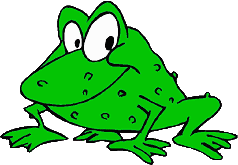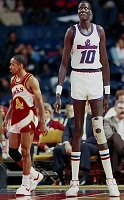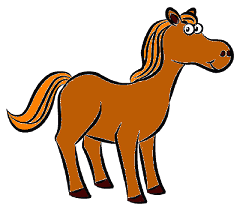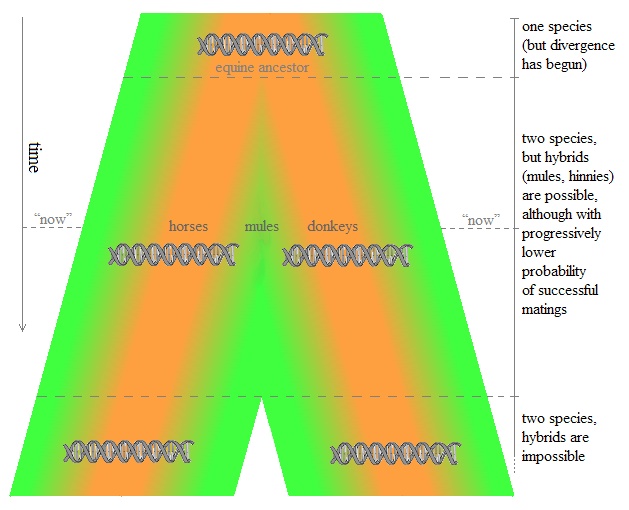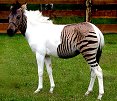|
Ditto with froggies. If what matters
is not “how high you jump” but “how well you survive
given the reduced water conditions” (and thus, how many
little ones you can procreate under those conditions),
then statistically it is more probable that those
froggies with less needs in water will be favored. Not
only will they have more descendants than the other
frogs, but they will pass this characteristic (their
lower dependence on water) to their little ones; who will
in turn be selected (those with even less dependence will
survive better, on average), and will pass their
ability to their own little ones; and so on and so forth.
This is natural selection. And the shrinking of
the lake presented to our ancestor frogs is called an environmental
pressure.
Now try to picture
the overall situation: the water of the lake is being
depleted over thousands of years. But within
thousands of years, we frogs can have thousands of
generations, because we are little things, we don’t
live for nearly a century like you humans. As the water
became less and less, our ancestors adapted to
the new conditions, as described in the previous
paragraph. It wasn’t an adaptation of a single
individual we are talking about; it was an adaptation
that took place generation after generation. The
better-adapted frogs had their decreased water-dependence
written into their DNA, because it is the
slightly different DNA that causes the different
dependence on water. And so, over thousands of years, we
ended up with land-dwelling frogs whose DNA differed
substantially from the DNA of their initial lake-dwelling
ancestors. Their DNA differed so much that if a
land-dwelling and a lake-dwelling frog could ever come
together to mate, they would fail to have offspring.
Or, they would have offspring which would be sterile, and
thus a dead-end in gene propagation (genes are parts of
the DNA). For this reason, because the two kinds of frogs
would not be able to produce a viable population of
descendants, we say that they belonged to two
different species. So this is an important concept:
We say that two individuals belong to
two different species
if their DNA’s differ so much that they fail to
have offspring,
or if they produce offspring which is almost
always sterile. |
The definition of the
concept of “species” in biology is more complicated,
but for our purposes we can make do with the above. Of
course, when I say that the ancestor lake-dwelling frogs
and the later land-dwelling ones would not be able to
conceive offspring after mating, I am referring to a
hypothetical situation, because the older lake-dwellers
ceased to exist by the time the new land-dwelling species
emerged. One species died, and another one emerged. But
the difference in their DNA’s would be real: if
we could somehow transport an ancient female frog forward
in time (for example, deep-freezing and preserving her)
and revived her later, we would see that she would be
unable to conceive when mating with a new land-dweller
male frog. (Later, another fellow animal will give you an
example in which it is not the case that one species
disappears and another one emerges, but two species are
created and they both continue to exist.)
All right, but I am a tree dweller, not
a land dweller. How did my ilk end up on trees? Well, the
land dwellers didn’t have an easy time on the ground.
Once forced to spend most of their time on land, they had
to confront different predators, who could find them
easily now, whereas before, their ancestors were safer in
the water. Those predators presented a new environmental
pressure on poor little land-dwellers, ancestors of
mine. By means of the same mechanism (always),
which we called natural selection, some of them
who were better at jumping on short bushes ran a lower
risk to be found on land and make a good meal for a bird
or snake. Generation after generation, those ancestors
that turned out to be better at climbing higher and
higher, hiding themselves in the foliage, fared better in
survival rates. So we ended up being a yet different
species, one that dwells on trees now, where we live
relatively safely. None of the land dwellers survived;
they went extinct, so that was a transitional
species, as we say. There isn’t anything “wrong”
with a transitional species; it’s just a species that
lived for a relatively short time, because its
environment wasn’t stable or safe enough for it, so the
transitional species vanished, leaving one or more
species as descendants who flourished in different
environments. See what’s special with the transitional
species? The ancient lake-dwellers might have lived in
the lake for millions of years; we,
tree-dwellers, might continue living on trees also for millions
of years, if no environmental pressure strikes us
meanwhile; but the transitional species lived only for a
few thousand years, which is a blink of an eye
in evolutionary terms. This concept will become very
important when we consider the question of the “gaps”
in the fossil record.
One last thing, which I didn’t
mention explicitly yet, but you probably suspect: my
species looks visibly different from both the
lake-dwellers, and the land-dwellers. It’s not just
some differences in our DNA molecules that are involved.
Our different environments cause us to appear
different (and our physical differences are encoded in
our DNA’s). For example, my toes are quite separated
from each other, and my soles are rubbery and sticky —
suitable adaptations for climbing on trees. But the lake
dwellers had their toes connected with a membrane, which
made their legs look like oars, and of course they had no
sticky substance on their soles. Also, the lakers had a
more streamlined body, suitable for swimming in water,
whereas my body is more stocky, having no strict
requirement for water-navigation. The transitional
land-dwellers had intermediate characteristics: they had
a short membrane connecting their toes, which wasn’t as
wide as their lake-dwelling ancestors’ one, and a more
athletic body than mine, but less so than the lakers.
One question, dear froggie: What
prevented your lake-dwelling ancestors from gradually
occupying the land, and once there, conquer the
trees, too? If variation exists among individuals, it
exists always, it doesn’t wait for an environmental
pressure — such as water depletion, or predators
— to appear! So what is it that prevented the lake
dwellers to gradually occupy the tree-living niche,
even before the water started being depleted?
Oh,
sexual reproduction! That, and the large population of
froggies. You see, you have a large population which is
aquatic, right? Suppose now an individual appears who is
slightly less dependent on water, so this fellow can
venture a bit longer away from the lake. But this chap
will have to “marry” another froggie to have
children, and this other froggie, the “spouse”, will
belong to the general population. Because the population
is large, chances are that the spouse will not be a
land-champion. Some of their children might inherit the
“good genes” (good toward less water-dependence) of
one of their parents, but they will “marry” again
with other froggies from the general population. So, the
“good genes” of the first frog will diffuse and be
lost in the large general population’s ocean of average
genes. It is only when an environmental pressure
eliminates the masses with the average genes that the
champions in “less-water dependence” can find mostly
other such champions to marry with, in a reduced-size
population. Thus they’ll create descendants that will
inherit the “good genes”.(*)
|

